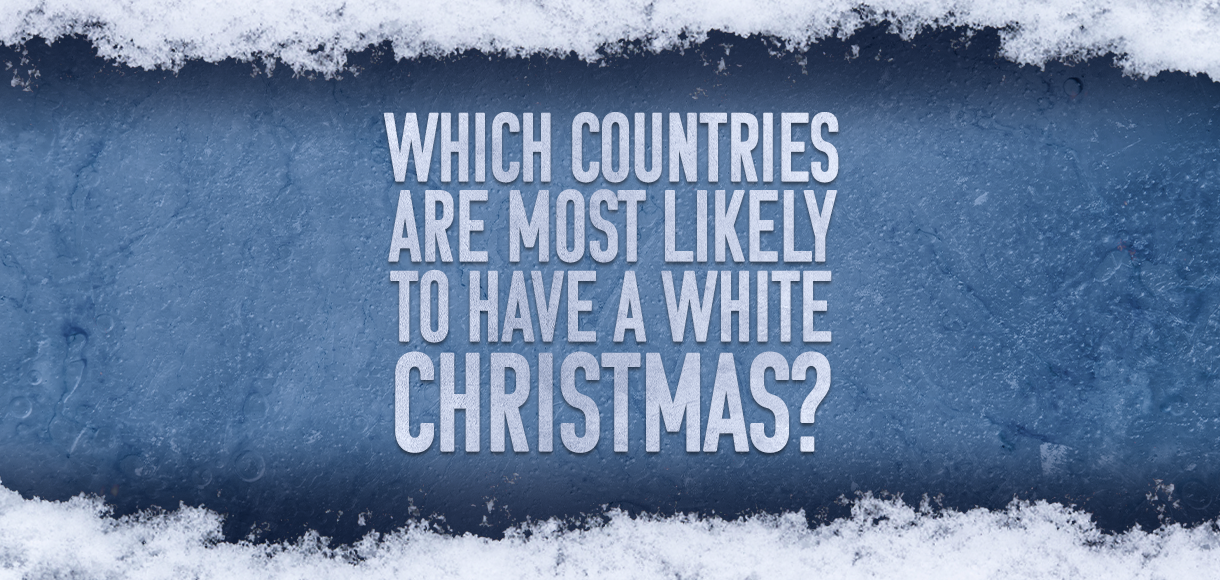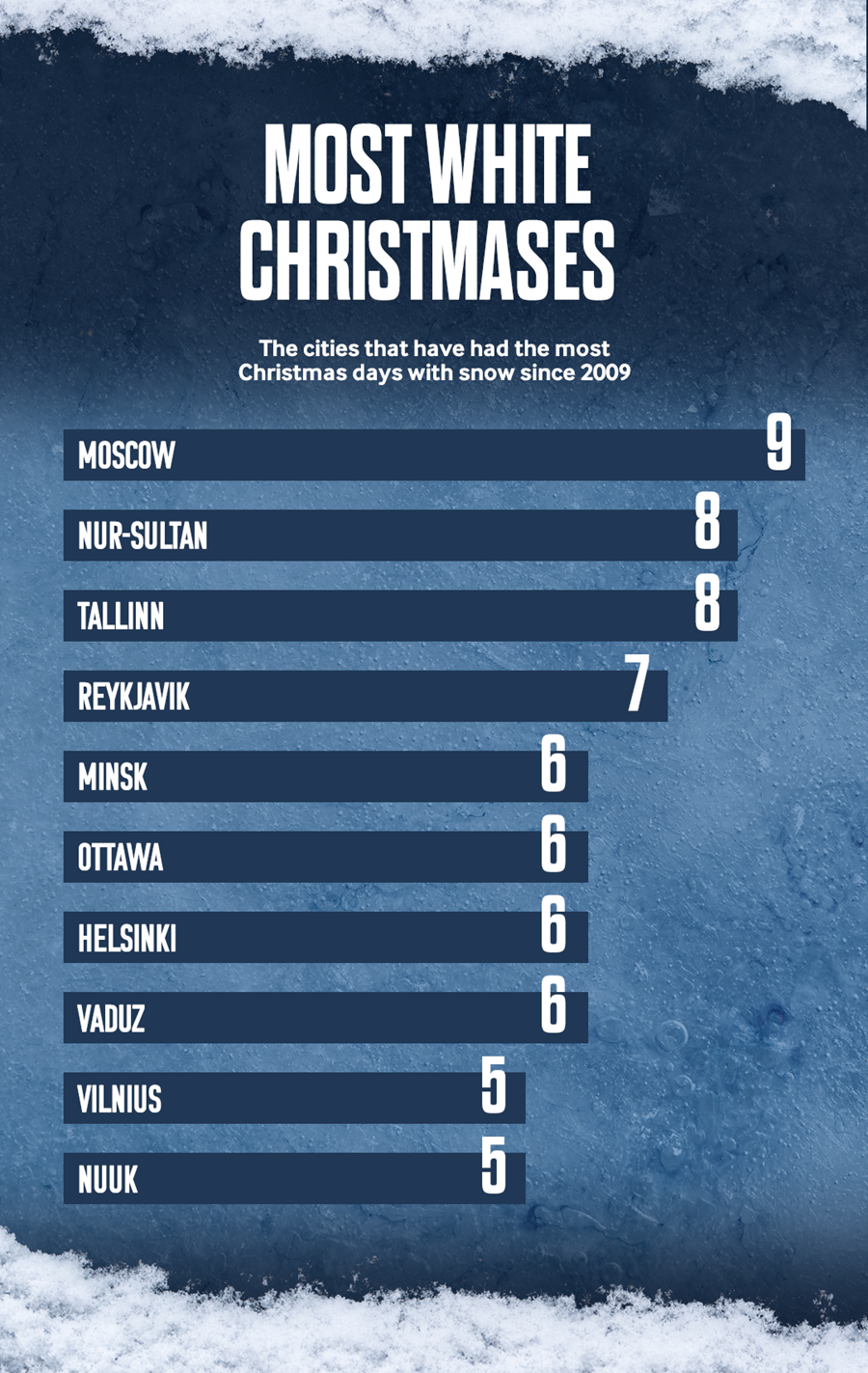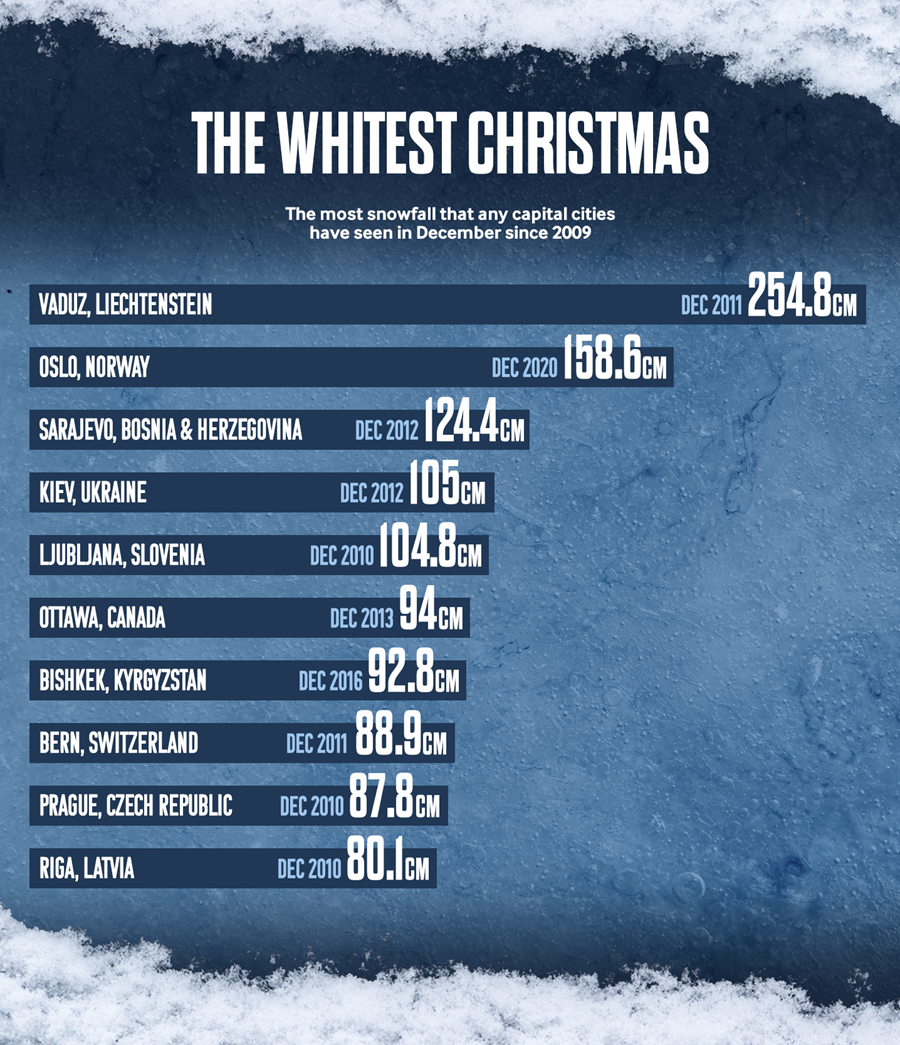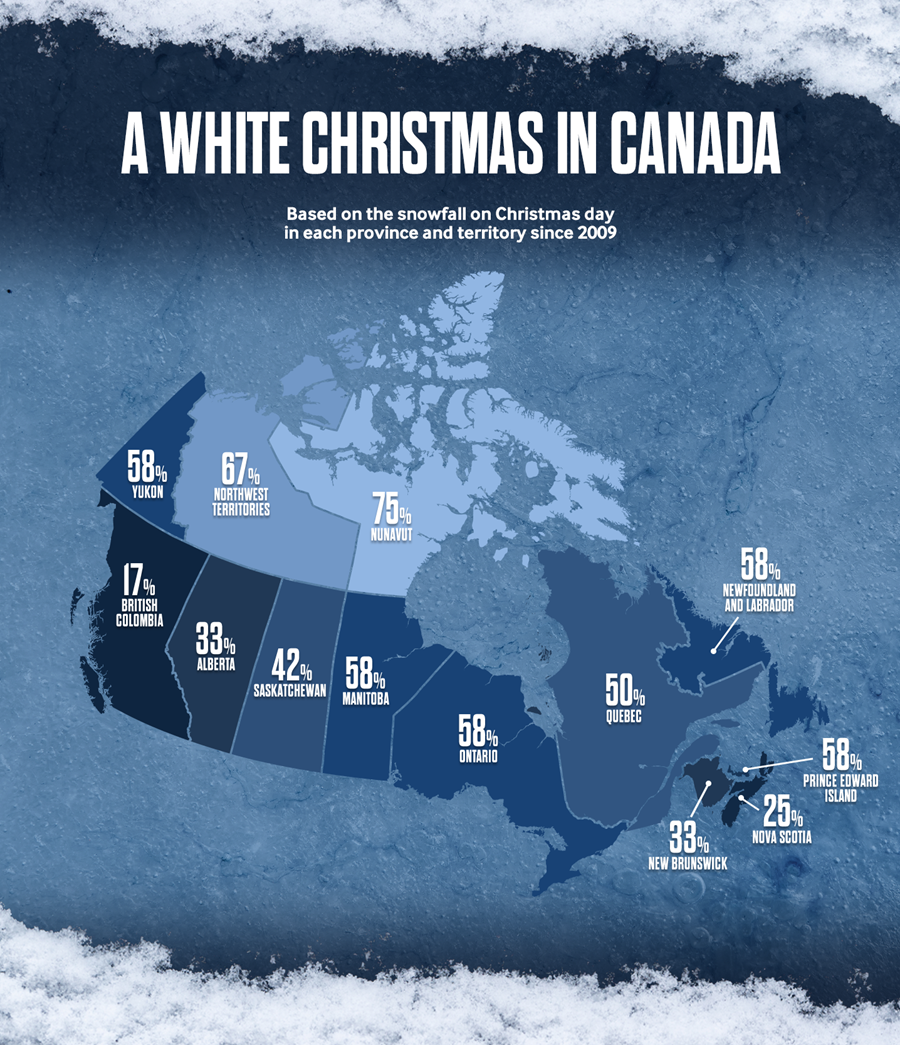Which countries are most likely to have a White Christmas?

We analyse the countries that have experienced most December snow and White Christmases in recent years.
Waking up to snowfall on Christmas morning is a vision that defines the festive period in several cultures around the world.
“I’m Dreaming of a White Christmas”, lyrics to a song first released by American songwriter Irving Berlin in the 1942 film Holiday Inn, is a familiar refrain during the festive period, while the romantic notion of snow at this time of year is a crucial element of the commercial efforts around Christmas.
Yet the reality is that even in the northern hemisphere, where snow falls far more often, a White Christmas is a rare event. It is priced at in the latest online casino betting.
It has various definitions, but a Christmas is generally considered to be white when snow is observed falling on December 25.
Based on World Weather Online data, we can see that only four capital cities across the globe have seen snow on over half of Christmas days since 2009.

Moscow (Russia), Nur-Sultan (Kazakhstan), Tallinn (Estonia) and Reykjavik (Iceland) are the capitals to have experienced more snowy Christmas days than any others.
With nine snowy Christmases in the last 12 years, Moscow is more likely to enjoy a 2021 White Christmas than any other capital.
London hasn’t enjoyed a single White Christmas since this data began to be recorded in 2009. For the UK, it is much more of an enchanting dream than a reality.
Analysing the amount of snowfall each capital has experienced throughout December may give us an even better idea of which are likely to experience it on the 25th of the month.
There must have been some serious snowmen in Vaduz, the capital of Liechtenstein, in 2012, when 254.8cm of snow fell across the month of December.

Oslo (Norway), Kiev (Ukraine) and Ottawa (Canada) have also experienced the kind of December snow that makes a White Christmas a near certainty.
Snow does not fall consistently, though, but is at the mercy of specific conditions that year.
Over 75 per cent (61 out of 80) of capital cities that have experienced December snow since 2009 had their snowiest December on record before 2015, suggesting that snow has decreased in quantity globally over the last decade.
Close to 50 per cent (39 out of 80) of those cities, meanwhile, saw their snowiest December on record in either 2010 or 2012. Several countries in northern Europe, including Sweden and Norway, registered record-low temperatures in December 2010.
The effect of global warming is that countries will experience the extremes of weather – more hot or cold than average – more often, so particularly cold, snowy winters – like 2010 and 2012 – may be followed by milder ones.
It is notable, for example, that just six capital cities experienced their snowiest December in 2018 or 2019, and that none experienced it in 2017.
But while Christmas weather is becoming more extreme, only one southern hemisphere capital – Dili, the capital of East Timor – has experienced December snow since 2009.
Studying capital cities give us an indication of snowfall in each country, but further analysis of each country would of course give us a different perspective on the chances of a White Christmas in more localised areas.
Take Canada, for example.

Notorious for its winter snow, no Canadian province or territory has seen fewer than three White Christmases since 2009, but the discrepancy between the most and least likely is still considerable.
Nova Scotia has had snow on just three occasions in the last 12 years, while Nunavut has experienced it nine times.
With weather patterns becoming increasingly unpredictable, knowing whether to expect a White Christmas where you live is extremely difficult.
But for the best chance of making Irving Berlin’s dream come true for you, move to Vaduz.




































